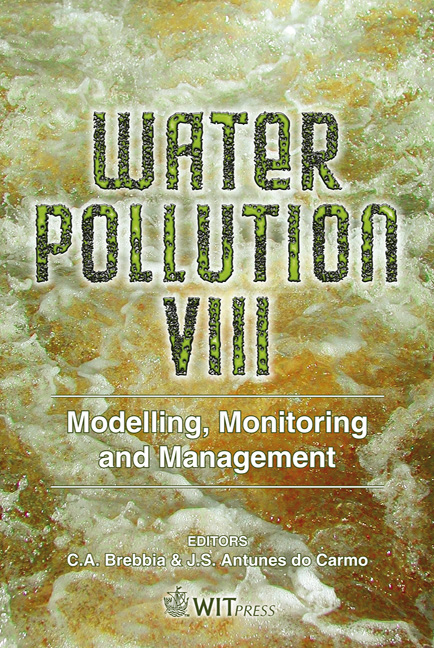Contribution To The Preservation Of Healthy Coastal Ecosystems
Price
Free (open access)
Transaction
Volume
95
Pages
10
Published
2006
Size
1,162 kb
Paper DOI
10.2495/WP060021
Copyright
WIT Press
Author(s)
J. S. Antunes do Carmo, J. L. S. Pinho & J. M. P. Vieira
Abstract
The release of pollutants into coastal zones from municipal and/or industrial drainage systems is a problem with a considerable environmental impact. In order to minimize the contamination of coastal waters in certain places (e.g., along beaches and in aquacultures), solutions based on the construction of submarine sewer outfalls have been proposed. In order to ascertain the optimal conditions for the release of an emissary, in particular the place of release, it is necessary to characterize the hydrodynamic transport processes that govern the evolution and mixture of pollutants in the area of interest. Circulation in the coastal zone is complicated, given that it is determined by a set of forcing mechanisms of diverse origins (meteorological, astronomical, large-scale ocean circulation, etc.) that endow it with a considerable space-time variation. Wastewater plume behaviour and characteristics depend both on the receiving water conditions and on the discharge characteristics. Accordingly, the implementation of a submarine outfall system requires a prior study of the site where the outfall is to be constructed, in order to achieve optimal rates of dilution of the pollutants released to the environment. Mathematical modelling appears to be a very useful tool for coastal zone environmental management either for continuous monitoring analysis or in accidental ecosystem rupture. This work presents some results and conclusions of two case studies. The first is a study of the pollutant cloud released at the São Jacinto submarine sewer outfall, located about 3 km offshore and 3 km north of an important coastal lagoon (NW Portugal). The main focus of this study was to establish the hydrodynamic conditions in which the pollutant release might affect the coastline (principally the existing beaches and lagoon). The second case presents some hydrodynamic results and water quality aspects of the Ria de Arosa (NW Spain), and also includes an assessment of the environmental impact of wastewater discharges from nine submarine outfalls considered in the sanitation plan of this bay. Results of faecal matter concentration distribution were used in the discussion on the outfall discharges’ impact on the natural water system for different hydrodynamic scenarios. In both cases, 3D numerical models were used. Keywords: coastal pollution, estuaries and coastal bays, submarine outfalls, numerical modelling.
Keywords
coastal pollution, estuaries and coastal bays, submarine outfalls, numerical modelling.





